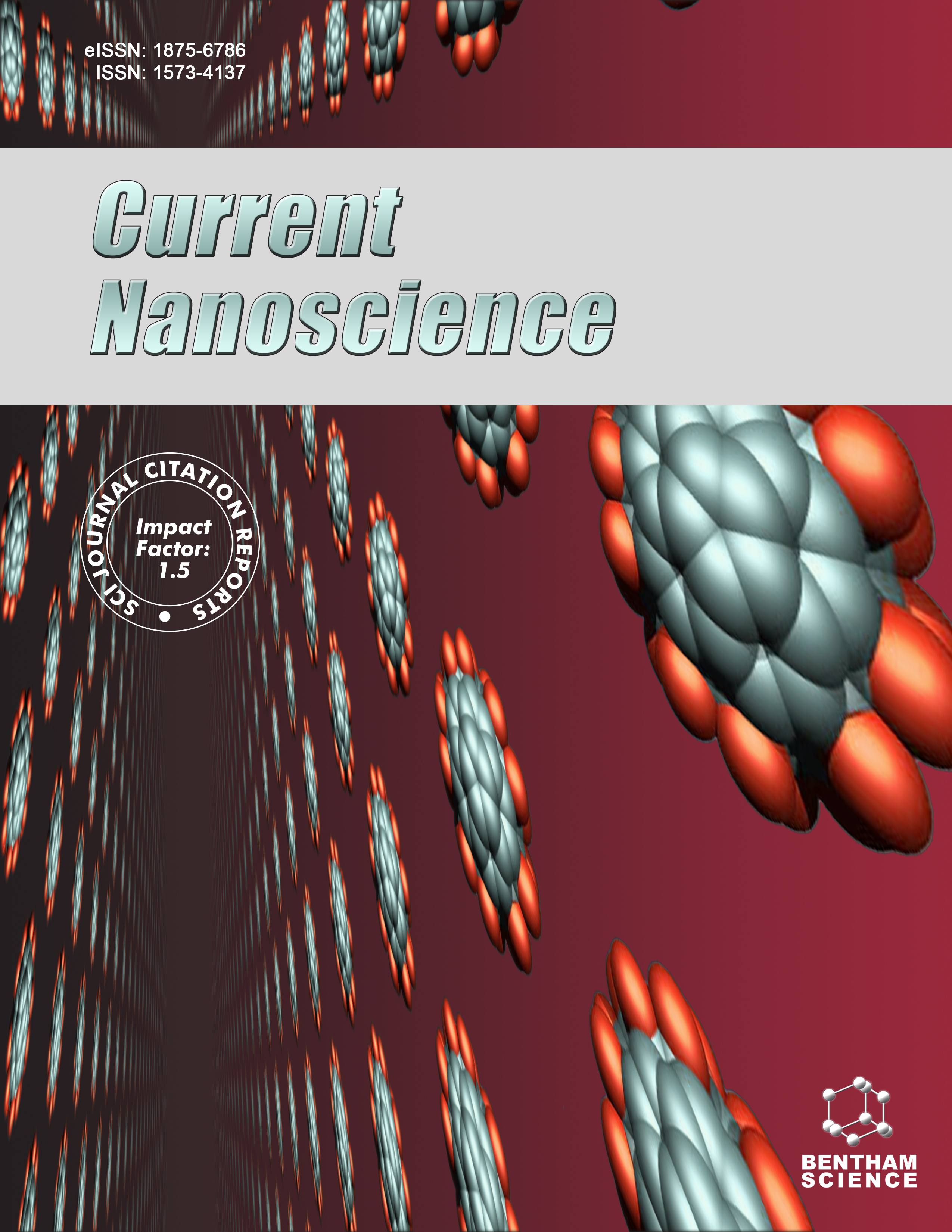- Home
- A-Z Publications
- Current Nanoscience
- Previous Issues
- Volume 18, Issue 5, 2022
Current Nanoscience - Volume 18, Issue 5, 2022
Volume 18, Issue 5, 2022
-
-
High-speed Atomic Force Microscope Technology: A Review
More LessThe atomic force microscope (AFM) is widely used in many fields such as biology, materials, and physics due to its advantages of simple sample preparation, high-resolution topography measurement and wide range of applications. However, the low scanning speed of traditional AFM limits its dynamics process monitoring and other further application. Therefore, the improvement of AFM scanning speed has become more and Read More
-
-
-
Application of Functional Magnetic Nanoparticles for Separation of Target Materials: A Review
More LessMagnetic nanoparticles (MNPs) have unique properties that have made them widely used in medicine and biology. They are easy to work with due to their responsiveness to external magnetic force. Functionalization of nanoparticles(NPs) effectively improves performance, increases stability in the body and acidic environment, and prevents the agglomeration of the particles. One of the important applications of these NPs is in t Read More
-
-
-
Controlled Alignment of Nanowires for Transparent Conductive Films: Methods and Applications
More LessAuthors: Zheng Li, Ruo-Zhou Li, Jing Yan, Ying Yu and Yuming FangNanowires (NWs) have received extensive attention as the candidate materials for transparent conductive films (TCFs) in recent years. To date, the aligned nanowire (NW)-based TCFs with the same arrangement direction have shown superior characteristics to their random counterparts in applications. To fully develop the potential of NW TCFs in devices and provide inspiration for the development of subsequent NW alignme Read More
-
-
-
Viability of Nanostructured Lipid Carrier System in Overcoming the Barriers Associated with Chemotherapeutic Delivery
More LessAuthors: Amit K. Singh, Prabhat Kumar Upadhyay and Manish KumarDelivery of anti-cancer agents is challenging due to some inherent problems associated with them like instability, low solubility, non-specificity, variable pharmacokinetics, narrow therapeutic window, multi-drug resistance development, and other physiological barrier related to tumor cells. In recent years, Nanostructured lipid carrier (NLC) has gained considerable importance in improving anti-cancer agents' therapeutic effi Read More
-
-
-
Integration of Nanotechnology in Plant Tissue Culture
More LessAuthors: Rachana Singh and Shadab AhamadIn the field of plant biotechnology, tissue culture is having colossal applications, for example, the production of disease-free plants and their mass multiplication, germplasm preservation, genetic manipulation to get improved variety as well as the production of biologically active compounds. The integration of nanotechnology and application of Nanoparticles (NPs) has shown a positive response in the elimination of microbial c Read More
-
-
-
Gold Particles Recovery using Novel Reducing Agent with Regard to Continuous Approach
More LessAuthors: Alireza Fotovat, Alireza Feizbakhsh and Ali B. GarmaroudiBackground: Over 300 tonnes of gold are utilised in electronic devices every year all over the world. End-of-life of these electronic equipments offers a crucial recycling potential as a secondary gold supply. Electronic boards are among common and exploitable gold sources that are widely used in various industries. The aim of this paper is to use the gold element of electronic boards by adjusting its surface functionality and Read More
-
-
-
Silver Nanoparticle Enhances Secretion of Exosomes in SH-SY5Y Cells: Potential Therapeutic Strategy for Human Neuroblastoma Cancer
More LessAuthors: Sangiliyandi Gurunathan, Min-Hee Kang and Jin-Hoi KimBackground: Exosomes-a subset of extracellular vesicles (EVs)-are secreted by virtually all cells, including human neuroblastoma cancer (SH-SY5Y) cells, into bodily fluids. Oxidative stress is critically involved in exosome biogenesis and release. Silver nanoparticles (AgNPs) induce cytotoxicity, oxidative stress, and apoptosis in cancer and non-cancer cells. Methods: Here, we studied whether AgNPs-induced oxidative stress could Read More
-
-
-
Green Synthesis of Magnetite Nanoparticles Using Leaf Plant Extracts of South American Endemic Cryptocarya alba
More LessBackground: Due to their extremely small size, large surface area, and magnetism, magnetite nanoparticles (Fe3O4NPs) have distinct chemical and physical properties, enhancing their suitability for a variety of medical, biosensing, electronic, and environmental applications. Methods: Magnetite nanoparticles were easily obtained by green synthesis using leaf extracts of the South American endemic Cryptocaria alba (Peumo) tree Read More
-
Volumes & issues
-
Volume 21 (2025)
-
Volume 20 (2024)
-
Volume 19 (2023)
-
Volume 18 (2022)
-
Volume 17 (2021)
-
Volume 16 (2020)
-
Volume 15 (2019)
-
Volume 14 (2018)
-
Volume 13 (2017)
-
Volume 12 (2016)
-
Volume 11 (2015)
-
Volume 10 (2014)
-
Volume 9 (2013)
-
Volume 8 (2012)
-
Volume 7 (2011)
-
Volume 6 (2010)
-
Volume 5 (2009)
-
Volume 4 (2008)
-
Volume 3 (2007)
-
Volume 2 (2006)
-
Volume 1 (2005)
Most Read This Month
Article
content/journals/cnano
Journal
10
5
false
en


